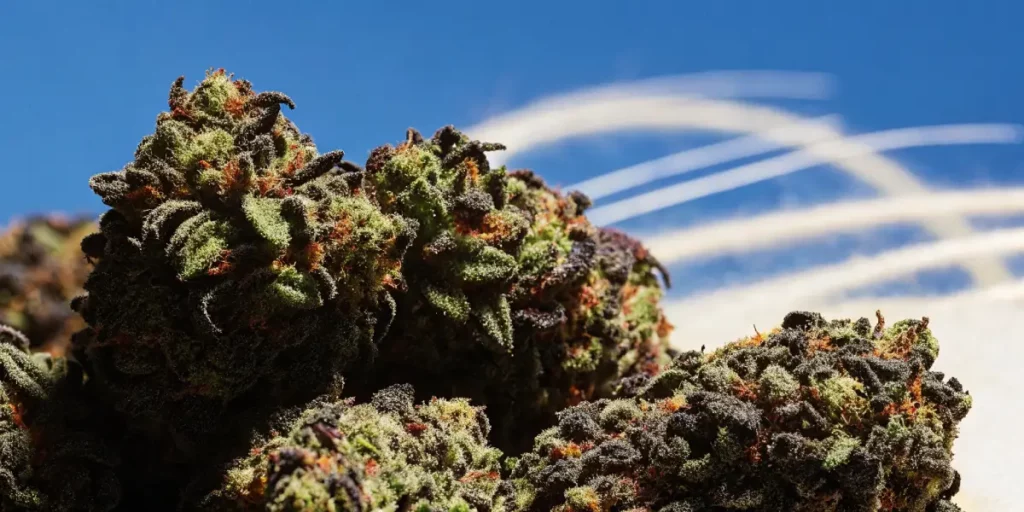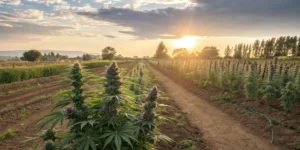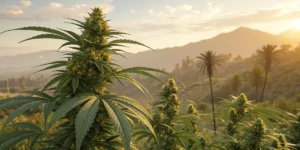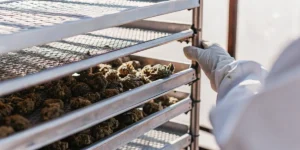Banana Punch is a tantalizing hybrid cannabis strain, a delightful cross between Banana OG and Purple Punch. Known for its aromatic blend of bananas and berries, and a relaxing high, it’s no wonder many cultivators are eager to grow this strain. Whether you’re a novice gardener or an experienced cultivator, growing this hybrid strain can be rewarding with the right approach. This step-by-step guide will walk you through the essentials of cultivating this variety, ensuring you attain healthy plants and exceptional yields.
The first step in growing this strain is selecting the right seeds and germinating them. It’s crucial to obtain seeds from a reputable supplier to ensure quality and genetic stability. Once you have your seeds, you can germinate them using the paper towel method. Moisten a few paper towels, place the seeds between them, and keep them warm and dark. Within a few days, the seeds will sprout, and you’ll notice small white roots emerging, indicating that they’re ready for planting.
As your seedlings begin to grow, providing a suitable environment is key. This variety thrives in a controlled environment with temperatures ranging between 70-85°F (21-29°C) during the day and slightly cooler nights. Maintain relative humidity levels between 40-60% for optimal growth. Whether you grow indoors or outdoors, ensure your plants receive adequate light. Indoors, use high-quality LED lights with a consistent light cycle of 18 hours on and 6 hours off during the vegetative stage.
Nutrient management is essential in promoting healthy growth. During the vegetative stage, provide nutrients high in nitrogen to encourage leafy growth. As your plants transition to the flowering stage, switch to a nutrient formula higher in phosphorus and potassium, which supports bud development. Ensure pH levels are kept between 6.0 and 7.0, as improper pH can lead to nutrient lockout and stunted growth.
Proper plant training techniques can significantly impact your yield. Techniques such as topping, low-stress training (LST), or the Screen of Green (SCROG) method can help maximize light exposure and encourage an even canopy. These methods not only boost yields but also improve air circulation, reducing the risk of mold and other issues, particularly in dense bud structures that this strain is known for.
When it’s time to harvest, usually 8-10 weeks into the flowering phase, look for visual cues like the darkening of pistils and the milky or amber trichomes. It’s crucial to time your harvest correctly, as this can affect the potency and flavor profile of your final product. After harvesting, ensure a proper drying and curing process to preserve the delightful terpenes and potency of this variety, resulting in a smooth, flavorful smoke.
Following this comprehensive guide will provide a solid foundation for growing this strain successfully. With patience, attention to detail, and dedication, you can enjoy a bountiful harvest of this delightful cultivar, offering a unique blend of flavors and a relaxing, euphoric high.
Strain Overview: Traits, Effects & Genetics
Banana Punch is an intriguing hybrid cannabis strain that captivates growers and consumers alike with its remarkable traits and delightful effects. The strain is a stellar cross between Banana Kush and the fruity Purple Punch, known for its distinct aromatic profile and picturesque appearance. With its balanced genetic lineage, this strain typically features an even split between Indica and Sativa characteristics, making it a versatile choice for various cultivation conditions and user experiences.
Visually, the plant is stunning with dense, tightly packed buds that are generously coated with a glistening layer of trichomes. The buds often display vibrant hues of purple, green, and hints of gold, giving it an eye-catching appearance that stands out in any cultivation setup. The aromatic profile is equally mesmerizing, offering a sweet and fruity bouquet that combines tropical essence with a subtle undertone of berries, courtesy of its Purple Punch lineage.
When it comes to effects, this strain delivers a harmonious blend of mental and physical sensations. Users often report an initial cerebral uplift, characterized by enhanced creativity and euphoria, which gradually transitions into a soothing body relaxation. This makes it an excellent choice for those seeking a balanced experience that can alleviate stress and anxiety while promoting relaxation. It’s particularly popular among users looking for relief from chronic pain, insomnia, and mood disorders without being overwhelmingly sedative.
Genetically speaking, it boasts a robust lineage that contributes to its diverse range of effects and growing characteristics. As a child of Banana Kush and Purple Punch, it inherits the best traits of each parent strain, resulting in a hearty plant that flourishes under both indoor and outdoor conditions. Growers will appreciate its adaptability and resilience, which makes it a rewarding choice for both novice and experienced cultivators aiming to harvest dense, resin-rich buds.
Optimal Environment to Grow Banana Punch Successfully
Banana Punch is a popular cannabis strain known for its deliciously sweet aroma and potent effects. To cultivate this strain successfully, creating an optimal environment is essential. The first step begins with selecting an ideal growing space, which should have good air circulation and the capacity to maintain consistent temperature and humidity levels. Indoor growing is recommended for greater control, with a grow tent providing the necessary structure and insulation to foster a stable microclimate for your plants.
Temperature control is crucial in cultivating this strain. The variety thrives in a warm environment, with optimal temperatures ranging between 70 and 80 degrees Fahrenheit during daylight hours. At night, it’s advisable to allow for a slight decrease in temperature to simulate natural conditions. Maintaining this temperature range helps prevent stress and encourages healthy growth, leading to robust plants with maximized yield potential. Additionally, investing in a reliable heating or cooling system can help maintain this climate, regardless of external weather conditions.
Humidity levels also play a critical role in the success of growing this cannabis variety. During the vegetative stage, plants prefer higher humidity levels, around 60-70%. As the plants transition to the flowering phase, gradually reducing humidity to about 40-50% can help prevent mold and mildew, particularly around the buds. Using a hygrometer will enable you to monitor humidity levels accurately, and incorporating a dehumidifier or humidifier will assist in adjusting these levels as needed.
Lighting is another essential element in cultivating this strain effectively. High-intensity discharge (HID) lights, such as metal halide (MH) for vegetative growth and high-pressure sodium (HPS) for flowering, are typically recommended for their efficacy in promoting growth and resin production. Ensuring a light cycle of 18 hours on and 6 hours off during vegetative growth, and switching to 12 hours on and 12 hours off during flowering, will facilitate optimal photosynthesis and blooming. Additionally, ensuring that lights are positioned at an appropriate distance from the plant canopy is crucial to prevent light burn while maximizing light exposure.
Grow Room Setup for Banana Punch Plants
Setting up an ideal grow room for Banana Punch plants requires careful planning and attention to their specific needs. This flavorful indica-dominant hybrid thrives in a controlled indoor environment where variables such as light, temperature, humidity, and air circulation can be finely tuned. Start with selecting a space that allows for easy access while being away from fluctuating external conditions. An insulated grow tent is an excellent choice as it helps maintain steady environmental conditions and keeps the plants safe from pests and contaminants.
Lighting plays a critical role in the growth of this strain. LED grow lights are highly recommended for their efficiency and ability to mimic natural sunlight while reducing energy costs. Position the lights to provide even coverage across the canopy, and adjust their height as the plants grow, ensuring they remain about 12 to 18 inches above the canopy to avoid scorching the top leaves. A light schedule of 18 hours on and 6 hours off during the vegetative stage, switching to 12 hours on and 12 hours off for flowering, helps mimic natural growth cycles.
Temperature and humidity must be carefully managed to suit this variety’s preference for a warm, slightly humid environment. During the vegetative stage, maintain temperatures between 70-80°F (21-27°C) and a relative humidity level around 50-60%. During the flowering stage, reduce the temperature slightly to 65-75°F (18-24°C) and lower the humidity to 40-50% to prevent mold and encourage healthy bud formation. Use oscillating fans to promote air circulation, ensuring CO2-rich air reaches all parts of the plants and helps in temperature regulation.
To optimize space in the grow room, consider training techniques like topping and low-stress training (LST) for these plants. These practices encourage bushier growth, more bud sites, and improved light penetration, ultimately leading to higher yields. Additionally, frequent inspection for pests and signs of disease is crucial; incorporate integrated pest management (IPM) strategies to keep the plants healthy and resilient. With thoughtful preparation and ongoing monitoring, your grow room can provide these plants with everything they need to flourish, producing rich, aromatic buds.
Indoor Growing Tips
Banana Punch is a captivating strain known for its unique flavor profile and potent effects. When cultivating this strain indoors, it is essential to create an environment that mirrors its natural habitat as closely as possible. Start by ensuring you have a reliable lighting system. Full-spectrum LED lights or a high-intensity discharge (HID) system can significantly enhance growth during both the vegetative and flowering stages. Pay attention to the light cycle as well; maintaining an 18/6 light schedule during the vegetative stage and a 12/12 cycle for flowering ensures optimal growth.
Temperature and humidity are also crucial factors to monitor. This strain thrives in a controlled climate where daytime temperatures range between 70°F and 80°F (21°C and 27°C), and nighttime temperatures drop slightly to encourage development. Humidity levels should be kept around 40-50% during the vegetative stage and reduced to 30-40% during flowering. Using air conditioning or a dehumidifier will help maintain these conditions consistently.
Soil quality and nutrients play a vital role in the health of these plants. Rich, well-draining soil with organic amendments like bat guano, bone meal, or well-composted manure will support vigorous growth and robust yields. Additionally, provide nutrients in a balanced ratio throughout the plant’s life cycle. During the vegetative phase, focus on nitrogen-rich nutrients to promote healthy foliage, and shift to phosphorus and potassium-rich nutrients during flowering to enhance bud formation and resin production.
Pruning and training techniques are useful for maximizing yields and ensuring ample light penetration. Consider topping and trimming your plants to encourage bushy growth and prevent overcrowding in the grow space. Implementing low-stress training (LST) techniques can also help spread out the canopy, enabling better air circulation and light exposure. This can be crucial for avoiding mold and mildew, which can adversely affect the quality of your harvest.
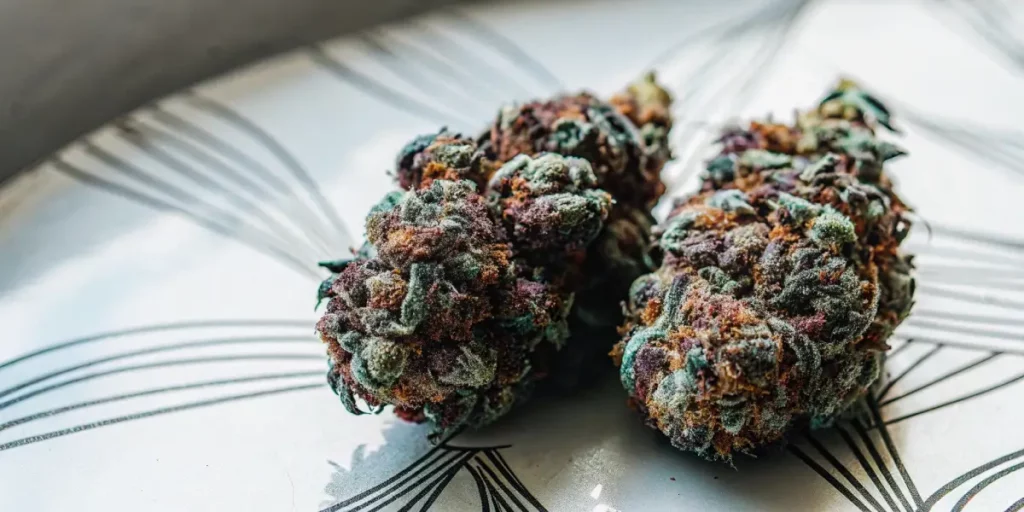
Outdoor Growing Tips
This popular cannabis strain is known for its fruity aroma and potent effects. Growing this variety outdoors can be a rewarding endeavor, as the plant tends to thrive under natural sunlight and in well-aerated environments. To maximize yield and potency, it is essential to understand the specific needs of this strain. Start by selecting a location with plenty of direct sunlight, as it requires between 6-8 hours of sunlight daily. The right spot can significantly impact the plant’s growth and bud production.
Soil quality is another crucial aspect to consider when growing this cannabis outdoors. This strain prefers rich, well-draining soil with a slightly acidic pH between 6.0 and 6.5. Adding organic matter such as compost or worm castings can greatly enhance soil fertility and promote healthy root development. This organic enrichment not only provides essential nutrients but also helps retain moisture, which is vital during the growing season. Regularly check the soil’s pH level and make amendments if necessary to maintain optimal conditions for growth.
Watering and feeding are critical for outdoor plants of this variety. During the initial growing phase, maintain consistent watering to establish a strong root system. As the plant matures, adapt your watering schedule according to the climate and weather conditions to avoid over- or under-watering. In terms of nutrients, this strain responds well to a balanced feeding regimen tailored to its growth phase. Use a high-nitrogen fertilizer during the vegetative stage and switch to a phosphorus-rich formula as the plant enters the flowering phase. This adjustment ensures robust growth and enhances bud development.
Pest management is a necessary consideration for outdoor growers of Banana Punch. Common issues include insects like aphids and spider mites, which can be mitigated through regular monitoring and the use of natural pest control methods. Introducing beneficial insects, such as ladybugs, can aid in managing pest populations. Additionally, applying neem oil or other organic pesticides can help protect your plants without the use of harsh chemicals.
How to Germinate & Propagate Banana Punch
Banana Punch is a unique hybrid strain that cannabis enthusiasts often seek to grow due to its appealing aroma and potent effects. To begin the process of growing this fascinating strain, it is crucial to start with proper germination. Germination is the phase where seeds sprout and begin their journey to becoming mature plants. For this process, it generally starts with selecting high-quality seeds from reputable sources. Ensure that the seeds are fertile, firm, and exhibit a dark, healthy color, often indicative of viability.
The paper towel method is a popular and straightforward approach for germinating these seeds. Begin by moistening a couple of paper towels with water, ensuring they are damp but not soaked. Place the seeds between the two moist paper towels and then put them inside a plastic bag or between two plates to retain moisture. Keep them in a warm, dark environment, such as a cupboard, maintaining a temperature of around 21-24°C (70-75°F). It typically takes about 3 to 7 days for the seeds to crack open and for tiny roots to emerge.
Once the seeds have successfully germinated, it’s time to plant them in a suitable growing medium to facilitate propagation. Use small pots filled with light, well-aerated soil to prevent any hindrance to their initial growth. Make a small hole about a quarter-inch deep in the soil and gently place the germinated seed root-down into it. Cover it lightly with soil and water sparingly. Keeping the soil moist, but not waterlogged, is vital for the seedlings’ development. Provide adequate light and maintain a consistent temperature to encourage healthy growth.
As the seedlings mature, gradually increase their exposure to light, ideally with LED lights or sunlight if conditions permit. This phase of propagation is crucial as the young plants need stable conditions to thrive. Additionally, develop a nurturing schedule that includes checking soil moisture, regulating temperature, and introducing airflow if necessary. This careful attention to detail during the germination and propagation stages can set the foundation for robust plants.
Throughout the propagation phase, be mindful of common issues like damping-off, a fungal disease that affects young plants. Ensure proper airflow and avoid overwatering to mitigate this risk. With patience and care, these early efforts in germination and propagation can lead to a successful cultivation of this cannabis variety, setting you up for a rewarding growing experience.
Vegetative Stage: Nurturing Your Banana Punch Plants
The vegetative stage is a crucial phase in the growth cycle of Banana Punch cannabis plants. During this stage, the plants focus on establishing a strong root system and developing robust foliage, which sets the foundation for successful flowering. Maintaining optimal conditions during this period ensures that the plants grow vigorously and are well-prepared for the flowering stage. To start, ensure that the growing environment is conducive to healthy growth by providing adequate light, suitable temperatures, and proper humidity levels. The ideal temperature range is between 68°F and 77°F (20°C to 25°C), with humidity levels ranging from 40% to 70%.
Lighting is a key factor during the vegetative stage, as these plants require abundant light to maximize photosynthesis and growth. A light schedule of 18 hours on and 6 hours off each day is commonly used to encourage vegetative growth. High-quality LED grow lights or full-spectrum fluorescent lights are recommended, as they provide the necessary light spectrum to support healthy plant development. Position the lights at an appropriate distance from the canopy to prevent light burn, while ensuring that the plants receive adequate illumination.
In addition to lighting, nurturing the plants during the vegetative stage requires attention to watering and nutrient management. These plants have a high demand for nutrients to support their rapid growth. Use a nutrient-rich soil or hydroponic solution, supplementing with nitrogen, phosphorous, and potassium in a balanced ratio. Regularly monitor pH levels to ensure nutrient availability, maintaining a pH range of 5.5 to 6.5. Water the plants consistently, but avoid overwatering, as cannabis plants are susceptible to root rot. Proper drainage and aeration can help maintain optimal soil conditions.
Training techniques, such as topping, low-stress training (LST), and pruning, can be beneficial for shaping plants during the vegetative stage. These methods encourage the development of multiple bud sites and result in a higher yield. Topping involves snipping the main stem to encourage lateral growth, while LST involves gently bending and securing branches to allow for more light penetration. Pruning excess foliage helps improve airflow and reduce the risk of mold and pests. Implement these techniques carefully to avoid stressing the plants.
Throughout the vegetative stage, closely monitor your plants for any signs of stress or nutrient deficiencies. Yellowing leaves, wilting, or stunted growth may indicate a problem with nutrients, watering, or environmental conditions. Regular inspection and prompt adjustments can help prevent minor issues from escalating and impacting your plants’ health. With diligent care and attention, your plants will establish a strong foundation, setting the stage for a fruitful flowering phase.
Flowering Banana Punch: What to Expect
This striking hybrid strain is known for its distinct blend of indica and sativa genetics, offering growers a robust and rewarding flowering experience. As the flowering cycle approaches, typically around 7 to 9 weeks, growers can anticipate substantial changes in the plant’s structure and bud development. The strain’s indica-leaning characteristics become more pronounced, manifesting in compact, dense bud formations that are covered in a frosty layer of trichomes. These crystalline trichomes are a telltale sign of the strain’s potency and are a primary indicator of its forthcoming rich cannabinoid content.
During the flowering phase, plants often exhibit vibrant hues, ranging from deep purple to light lavender, especially if they are exposed to cooler nighttime temperatures. This color transformation, coupled with the plant’s natural shine, makes for an aesthetically pleasing grow. Additionally, the strain releases a delightful aroma during flowering, a fragrant bouquet of tropical fruit and sweet earthiness that fills the grow room, offering a preview of its characteristic flavor profile. Cultivators should ensure proper ventilation to manage the potent scent, which can be quite intense as the plants reach full maturity.
Nutrient management is crucial during the flowering stage, as this variety thrives with a well-balanced feeding schedule that includes sufficient phosphorus and potassium. These nutrients support healthy bud development and enhance resin production, crucial for the strain’s eventual potency and flavor. Monitoring humidity levels is equally important, as high humidity can lead to mold issues that could jeopardize yield quality. With careful attention to environmental factors and diligent care, growers can expect a bountiful harvest marked by unique aroma, vivid colors, and exceptional resin production, making all efforts well worthwhile.
Feeding: Fertilizers & Nutrient Schedule
Banana Punch, renowned for its fragrant aroma and relaxing effects, requires a thoughtful approach when it comes to feeding. This strain, like many others, benefits from a well-planned nutrient schedule that considers its needs during different growth phases. To optimize the growth and yield of this strain, growers must use the appropriate fertilizers and pay close attention to the plant’s response to different nutrients. Understanding its feeding preferences ensures the plant’s health and potentiates its cannabinoid production.
During the vegetative stage, the plant demands a nutrient-rich diet primarily focusing on nitrogen. This helps in strengthening the plant’s structure and ensuring vigorous growth. A balanced NPK (Nitrogen, Phosphorus, Potassium) ratio of 3:1:2 is often recommended for this phase. Additionally, micronutrients such as calcium, magnesium, and iron should not be neglected, as they play a critical role in the plant’s growth and development. Regular monitoring of the plant’s response is critical to avoid nutrient burn or deficiencies.
As the plant transitions to the flowering stage, its nutrient needs shift significantly. At this stage, the focus should turn to increasing phosphorus and potassium levels, essential for flower development. An adjusted NPK ratio of 1:3:3 is typically suggested. This shift supports the formation of dense and resinous buds, characteristic of this variety. It’s crucial to gradually introduce this change in nutrient composition to allow the plant to adjust smoothly, thus preventing any stress.
Monitoring the pH level of the growing medium is another vital aspect of feeding the plants. The ideal pH range is 6.0 to 6.5 in soil and slightly lower at 5.5 to 6.0 for hydroponic systems. This ensures optimal nutrient uptake, as imbalanced pH levels can lock out essential nutrients, inhibiting growth and compromising yield quality. Frequent checks and adjustments help maintain this balance throughout the growing cycle.
To achieve the best results, a feeding schedule tailored to your specific growing conditions is advisable. Environmental factors such as light intensity, humidity, and temperature can impact nutrient needs. Therefore, it might require adjustments to the recommended ratios and schedules. By taking a meticulous approach to nutrient management, growers can help this strain achieve its potential, rewarding them with high-quality flowers with exquisite flavor profiles.
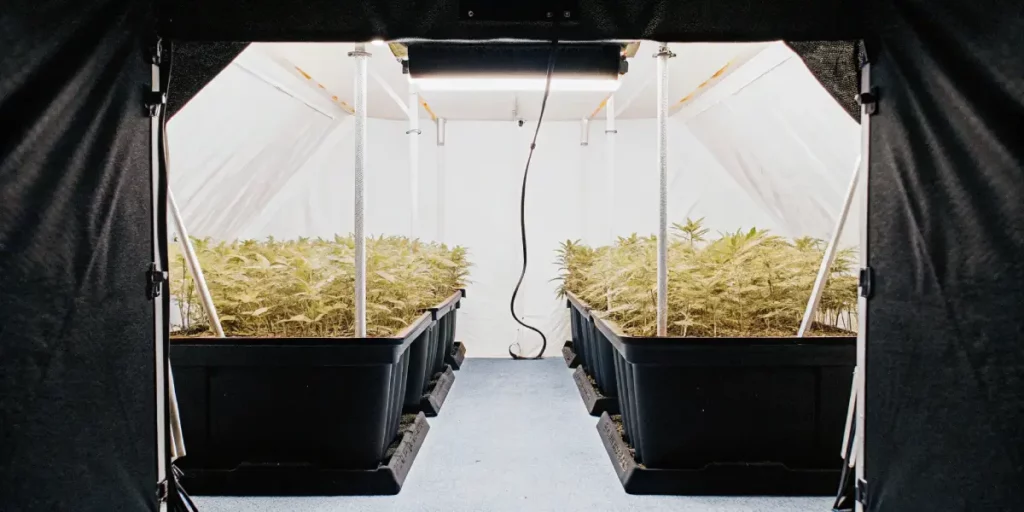
Pest and Disease Prevention for Healthy Cannabis Plants
Growing Banana Punch, a unique and flavorful hybrid strain of cannabis, requires diligent attention to pest and disease prevention to ensure healthy plants. Pests and diseases can devastate your crop if not properly managed, leading to poor yields and compromised quality. The key to successful cannabis cultivation lies in maintaining a clean and healthy growing environment and employing proactive measures to keep potential threats at bay from the start.
A comprehensive integrated pest management (IPM) strategy is essential for preventing infestations and diseases. One of the foundational practices in IPM is regular monitoring of your plants. This involves frequent inspections of leaves, stems, and soil to detect early signs of pest presence or disease development. Look out for discolored spots, wilting, or unexplained damage, which could indicate a problem. Early detection is crucial, as it allows for swift action to be taken before the issue escalates.
Beyond monitoring, maintaining optimal environmental conditions is vital. Ensure your growing area has proper ventilation, as stagnant air can encourage mold and mildew growth, both of which are detrimental to Banana Punch plants. Control humidity levels, keeping them within the recommended range for cannabis plants. Too much moisture can attract mold, while too little can stress the plants, making them susceptible to pests. Installing a hygrometer and using fans or dehumidifiers can help maintain the ideal climate.
Additionally, implementing preventative measures such as using beneficial insects and organic pesticides can be highly effective. Introducing predatory insects like ladybugs or predatory mites can naturally control pest populations. When selecting pesticides, opt for organic, plant-safe options to minimize environmental impact and ensure the safety of the final product. Neem oil, for example, is a popular choice among cannabis growers for its ability to combat pests without harming the plants.
Lastly, maintaining cleanliness both in the growing space and on your tools is crucial. Regularly clean and sterilize your equipment to prevent cross-contamination and disease spread. Remove any dead leaves or debris, as they can harbor pests and promote disease. By adopting these practices, you can significantly reduce the risk of pests and diseases, ensuring your Banana Punch cannabis plants remain healthy and productive.
Harvesting & Drying banana punch the Right Way
Harvesting at the right time is crucial to maximizing potency, flavor, and yields. This hybrid strain, known for its delicious tropical fruit aroma and potent effects, is typically ready for harvest around 8 to 10 weeks into the flowering phase. Begin by observing the trichomes on the buds using a magnifying glass or jeweler’s loupe. Ideally, most trichomes should be milky white with a few beginning to turn amber, signifying peak THC levels and readiness for harvest.
Timing the harvest correctly helps to optimize the terpene profile and cannabinoid content of the strain. Prepare your workspace by ensuring your tools are sanitized and sharp to prevent any plant damage. It’s recommended to harvest during the early hours of the morning when the plants are less stressed. Begin by cutting down the branches or whole plant, depending on your drying space and method preference. It’s essential to handle the buds carefully to preserve the trichomes and avoid contamination or mildew.
Drying the harvested buds properly is as important as harvesting them. This process involves gradually reducing moisture without degrading the potent compounds that contribute to its unique effects and flavors. Hang the branches upside down in a controlled environment where temperature and humidity can be monitored closely. Aim for a temperature between 60-70°F (15-21°C) and humidity levels around 50-60%. These conditions prevent rapid drying which can lead to a harsh smoke and preserve the aromatic terpenes.
Keep your drying area dark to avoid UV degradation of cannabinoids. Air circulation is crucial, but ensure that it’s gentle to prevent any loss of potency or flavor. This drying process usually takes 7-14 days. Finally, check if the small stems snap rather than bend; this is a reliable indicator that your buds are sufficiently dried. Proper drying enhances the strain’s signature sweet berry and tropical fruit notes, ensuring a premium product for consumption.
Strain Type: Indica, Sativa or Hybrid?
Banana Punch is a hybrid cannabis strain that perfectly balances the characteristics of both Indica and Sativa varieties. This particular strain is the result of an ingenious crossbreeding between the Banana OG and Purple Punch strains. Each of its parent strains contributes its unique properties, resulting in a well-rounded cultivar that appeals to a diverse range of cannabis enthusiasts. With its tempting aroma and balanced effects, this hybrid embodies the best attributes of both Indica and Sativa strains, offering a versatile option for growers and consumers alike.
The hybrid nature allows it to offer a broad spectrum of effects. The Indica component provides relaxing and calming sensations, which many find beneficial for alleviating stress and promoting a sense of tranquillity. These effects make it suitable for evening use or when you need to unwind after a long day. On the other hand, the Sativa influence ensures an uplifting experience that can enhance mood and inspire creativity, making it equally fitting for daytime use. This duality is what makes this variety unique and sought-after among growers and users who appreciate a balanced high.
For cannabis cultivators, the hybrid genetics offer several advantages. It typically produces medium-to-high yields and is known for its resilience, making it an excellent choice for both novice and experienced growers. Its growth characteristics often lean more towards those typical of an Indica-dominant strain, such as shorter flowering times and a compact stature, which is beneficial for indoor cultivation where space can be limited. Meanwhile, the Sativa genetics present within the strain can contribute to its ability to adapt to outdoor conditions, given an appropriate growing climate. This variety thus represents an optimal choice, offering growers an opportunity to cultivate a plant that thrives both indoors and out, with delightful results that highlight its hybrid origin.
Why Grow Banana Punch? Key Benefits for Cultivators
Banana Punch, a hybrid strain resulting from a cross between Banana OG and Purple Punch, stands out not only for its seductive fruity aroma but also for the myriad benefits it offers to cannabis cultivators. One of the key reasons growers are attracted to this strain is its impressive resin production, making it a prime candidate for those interested in creating concentrates. The resinous buds allow for high-quality extraction, yielding potent oils and waxes that carry the strain’s unique flavors. In a market that’s increasingly valuing both quality and novelty, this variety provides both in abundance.
Another compelling reason to cultivate this strain is its balanced growth characteristics, which make it suitable for both indoor and outdoor cultivation. Its genetic blend gives it a robust structure, allowing it to withstand different growing conditions with relative ease. For indoor growers, its medium height and generous lateral branching are ideal for space management and canopy optimization. On the other hand, its resilience in outdoor settings enables it to fend off common pests and diseases, providing peace of mind to those who may not have the luxury of constant supervision.
Beyond its growth benefits, this strain offers an exceptional user experience, which indirectly benefits cultivators through increased demand and marketability. It is renowned for its relaxing yet uplifting effects, making it a favorite among both recreational and medicinal users. Additionally, the distinctive tropical fruit flavor profile sets it apart from other strains, making it a standout choice in dispensaries. This unique combination of pleasurable effects and enticing flavors can aid in building a loyal customer base, ensuring steady sales and appreciation for those who venture into growing this exquisite variety.
For cultivators prioritizing yield, this option is attractive due to its generous bud production. With optimal growing conditions, growers can expect a high yield of dense, colorful buds that are not only visually appealing but also provide substantial weight. This efficiency in production contributes to the strain’s cost-effectiveness, allowing growers to maximize investment returns. Whether you’re a seasoned professional or a passionate amateur, cultivating this strain is an endeavor rich in rewards, offering an enriching growing experience alongside promising commercial potential.
Potential Challenges When Growing Banana Punch
When cultivating Banana Punch, growers may encounter several challenges, primarily due to its distinct genetic composition. This well-loved strain is known for its robust flavors and potent effects, derived from its parent strains, Banana OG and Purple Punch. However, maintaining optimal growth conditions can be demanding. This variety prefers a warm, Mediterranean-like climate which may be difficult to replicate indoors without sophisticated climate control systems. Sudden temperature fluctuations or improper humidity levels can stress the plants, potentially leading to stunted growth or pest infestations.
Another challenge with this cultivar is its susceptibility to mold and mildew, especially in environments with excessive humidity. This characteristic necessitates rigorous attention to the growing environment, ensuring adequate ventilation and controlling moisture levels both in the soil and air. Regular pruning and maintaining good air circulation around the plants can mitigate these risks, safeguarding the plant from developing mold, particularly in dense buds where moisture can get trapped.
Additionally, growers may face nutrient management issues with this variety. It requires a delicate balance of nutrients to flourish, with particular emphasis on phosphorus and potassium during the flowering stage to support bud development. Over-fertilization can lead to nutrient burn while under-fertilization may result in nutrient deficiencies, both of which can adversely affect plant health and yield. Close monitoring and understanding of nutrient requirements specific to this strain are crucial for successful cultivation.
Pest management is another critical consideration when growing this strain. Like many others, it can attract common cannabis pests such as spider mites and aphids. Using organic or chemical pest control methods requires careful application to avoid harming the plants while effectively managing pests. Routine inspections and using preventative measures like natural predators or insecticidal soaps can help in maintaining a pest-free growing environment.
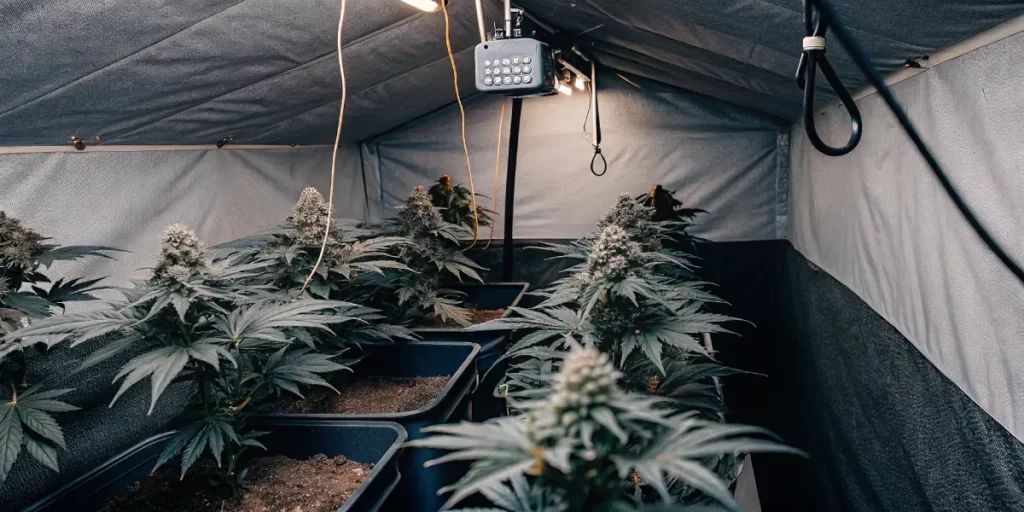
Is Banana Punch Worth Buying? Here’s What You Need to Know
Banana Punch is a hybrid cannabis strain that combines the genetics of Banana OG and Purple Punch. Known for its fruity aroma reminiscent of ripe bananas and tropical punch, this strain has gained popularity among cannabis enthusiasts. Its appeal doesn’t rest solely on its aromatic profile; the relaxing effects and potential therapeutic benefits make it a worthy contender in the cannabis market. To determine if this strain is worth your investment, it’s essential to consider both its cultivation requirements and its end-user experience.
From a grower’s perspective, this variety can be a rewarding option. It usually thrives well in controlled indoor environments, where temperature and humidity levels can be meticulously managed. This makes it a suitable choice for dedicated home growers seeking to cultivate a high-quality crop. The strain typically exhibits a flowering period of approximately 8 to 10 weeks, resulting in dense buds coated with a generous layer of trichomes. However, cultivating this strain may require some experience, as it does best with close attention to lighting and nutrient schedules to achieve optimal results.
For consumers, it offers a complex experience. Its balanced hybrid nature means it provides both cerebral euphoria and physical relaxation, making it an excellent choice for evening use or unwinding after a stressful day. It’s also renowned for its potential to alleviate symptoms associated with chronic pain, stress, and insomnia. This multifaceted impact has made it a popular choice among both recreational and medicinal users. While it does command a higher price due to its quality, the robust effects and enjoyable flavor profile often justify the investment for those seeking a superior cannabis experience.
Ultimately, whether this strain is worth buying depends on your specific needs and preferences as a grower or consumer. If you’re looking for a strain that offers a unique flavor, potent effects, and potential therapeutic benefits, this can be a worthwhile addition to your cannabis collection. However, the challenges in cultivation and the higher cost may be factors you’ll need to weigh against your expectations and experience level. As with any cannabis purchase, thorough research and understanding of this strain’s characteristics can significantly enhance your satisfaction.
FAQs
What is banana punch?
Banana Punch is a cannabis strain known for its delightful blend of aromas and flavors that resemble tropical fruits, particularly banana. It’s a hybrid strain that is cherished for its balanced effects, providing users with both cerebral stimulation and physical relaxation. The strain is often sought after for its potency and prolonged effects, making it a favorite among seasoned cannabis enthusiasts.
What are the effects of banana punch?
The effects of Banana Punch are generally balanced, offering both mental and physical benefits. Users often experience an initial euphoria that enhances mood and creativity, followed by a relaxing body high. This combination makes it suitable for activities that require focus and creativity while also helping to unwind and reduce stress. It can also provide a sense of calm and tranquility, making it ideal for evening use.
What are the main terpenes found in banana punch?
Banana Punch is rich in several terpenes that contribute to its unique aroma and effects. The dominant terpenes include myrcene, which provides earthy and musky notes with relaxing effects. Limonene, which imparts a citrusy scent and has mood-enhancing properties, and caryophyllene, known for its spicy aroma and potential anti-inflammatory benefits. This combination of terpenes gives Banana Punch its signature tropical and fruity profile.
How should I consume banana punch for the best experience?
To enjoy Banana Punch to its full potential, it is important to consider dosage and method of consumption. Start with a small dose, especially if you are new to the strain, to assess its effects. Vaping or smoking can provide immediate effects, while edibles might offer a more prolonged experience. Consider the context and desired effects – for relaxation, an evening setting might be best, whereas creativity and focus might benefit from a daytime use under controlled dosage.
Where can I find banana punch?
Banana Punch can be found at many cannabis dispensaries, especially in regions where marijuana is legal. Availability may vary based on location, so it is advisable to check with nearby dispensaries or their online menus. For those who prefer growing their own, seeds are also available through licensed seed banks. It is essential to purchase from reputable sources to ensure quality and authenticity.

